Collaborative Research Center 360
Constrained Quantum Matter
Less is more!
We use carefully chosen constraints to design and
manipulate quantum states in solids, seeking to create new quantum
materials and explore conceptual challenges from quantum information
theory to non-equilibrium physics.
On 22. - 25. September 2025 there will be the first TRR 360 International Conference. Find out more about the details here!

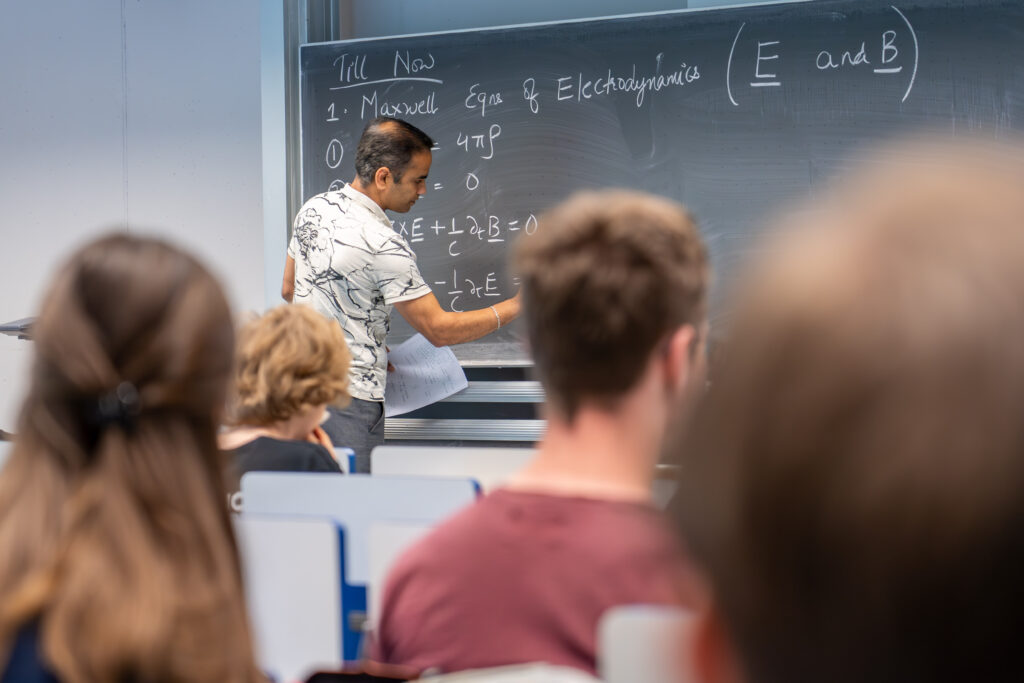

2025 James C. McGroddy Prize awarded to Hidenori Takagi
We are very proud to announce that one member of the TRR 360, Hidenori Tagaki from the MPI for solid-state research in Stuttgart, will be awarded with the 2025 James C. McGroody Prize for New Materials. He is honoured “for seminal theoretical and experimental research, materials design and discoveries that pioneered the exploration of novel forms of topological quantum matter in spin-orbit assisted Mott insulators realized in transition metal oxides”. More information can be found here. The prize will be presented in March 2025.
Next events
Recent Articles
Sharma, S.; Chioncel, L.; Marco, I. Di Exploring strong electronic correlations in the breathing kagome metal Fe3Sn Journal Article Phys. Rev. B 111, 235127 (2025). @article{sharma_exploring_2025,Kagome metals have emerged as pivotal materials in condensed matter physics due to their unique geometric arrangement and intriguing electronic properties. Understanding the origin of magnetism in these materials, particularly in iron-rich Fe-Sn binary compounds such as Fe3Sn, holds a significant importance, as they represent potential candidates for permanent magnets with a high Curie temperature and a strong magnetic anisotropy. In the present study, we employ density functional theory and dynamical mean-field theory to analyze the electronic structure and magnetic properties of Fe3Sn. Our investigation reveals the presence of several nearly flat bands and Weyl nodes at low excitation energies. The inclusion of local correlation effects is shown to push these features even closer to the Fermi energy, which may be important for their manipulation via external stimuli. Regarding magnetism, the Hubbard-like interaction leads to an increase of orbital polarization at the expenses of a minor reduction of the spin moment. The magnetic anisotropy energy exhibits a strong dependence on the particular choice of the Coulomb interaction parameters. Additionally, our detailed analysis of the interatomic exchange interactions indicates a significant contribution from the antisymmetric exchange, i.e., the Dzyaloshinskii-Moriya interaction, which showcases the existence of magnetic chirality in the system. Overall, our investigation highlights a strong interplay between the flat bands near the Fermi level, the local Coulomb interaction, and the triangular geometry of the lattice, which plays a crucial role in driving the magnetic properties of this material. |
Prodan, L.; Evans, D. M.; Sukhanov, A. S.; Nikitin, S. E.; Tsirlin, A. A.; Puntigam, L.; Rahn, M. C.; Chioncel, L.; Tsurkan, V.; Kézsmárki, I. Easy-cone state mediating the spin reorientation in the topological kagome magnet Fe3Sn2 Journal Article Phys. Rev. B 111, 184442 (2025). @article{prodan_easy-cone_2025,We investigated temperature-driven spin reorientation (SR) in the itinerant kagome magnet Fe3Sn2 using high-resolution synchrotron x-ray diffraction, neutron diffraction, magnetometry, and magnetic force microscopy (MFM), further supported by phenomenological analysis. Our study reveals a crossover from the state with easy-plane anisotropy to the high-temperature state with uniaxial easy-axis anisotropy taking place between ∼40 and 130 K through an intermediate easy-cone (or tilted spin) state. This state, induced by the interplay between the anisotropy constants 𝐾1 and 𝐾2, is clearly manifested in the thermal evolution of the magnetic structure factor, which reveals a gradual change of the SR angle 𝜃 between 40 and 130 K. We also found that the SR is accompanied by a magnetoelastic effect. Zero-field MFM images across the SR range show a transformation in surface magnetic patterns from a dendritic structure at 120 K to domain-wall-dominated MFM contrast at 40 K. Our analysis suggests that the SR and associated microstructural transformations are the results of competing first- and second-order anisotropy constants. |
Sakrikar, P.; Shen, B.; Poldi, Eduardo H. T.; Bahrami, F.; Hu, X.; Kenney, E. M.; Wang, Q.; Fruhling, K. W.; Wang, C.; Gupta, R.; Khasanov, R.; Luetkens, H.; Calder, S. A.; Aczel, A. A.; Fabbris, G.; Hemley, R. J.; Plumb, K. W.; Ran, Y.; Gegenwart, P.; Tsirlin, A. A.; Haskel, D.; Graf, M. J.; Tafti, F. Pressure tuning of competing interactions on a honeycomb lattice Journal Article Nat. Commun. 16, 4712 (2025). @article{sakrikar_pressure_2025,Exchange interactions are mediated via orbital overlaps across chemical bonds. Thus, modifying the bond angles by physical pressure or strain can tune the relative strength of competing interactions. Here we present a remarkable case of such tuning between the Heisenberg (J) and Kitaev (K) exchange, which respectively establish magnetically ordered and spin liquid phases on a honeycomb lattice. We observe a rapid suppression of the Néel temperature (TN) with pressure in Ag3LiRh2O6, a spin-1/2 honeycomb lattice with both J and K couplings. Using a combined analysis of x-ray data and first-principles calculations, we find that pressure modifies the bond angles in a way that increases the ∣K/J∣ ratio and thereby suppresses TN. Consistent with this picture, we observe a spontaneous onset of muon spin relaxation (μSR) oscillations below TN at low pressure, whereas in the high pressure phase, oscillations appear only when T < TN/2. Unlike other candidate Kitaev materials, Ag3LiRh2O6is tuned toward a quantum critical point by pressure while avoiding a structural dimerization in the relevant pressure range. |
Szaller, D.; Prodan, L.; Geirhos, K.; Felea, V.; Skourski, Y.; Gorbunov, D.; Förster, T.; Helm, T.; Nomura, T.; Miyata, A.; Zherlitsyn, S.; Wosnitza, J.; Tsirlin, A. A.; Tsurkan, V.; Kézsmárki, I. Coexistence of antiferromagnetism and ferrimagnetism in adjacent honeycomb layers Journal Article Phys. Rev. B 111, 184404 (2025). @article{szaller_coexistence_2025,Ferro-/ferri- and antiferromagnetically ordered phases are typically exclusive in nature, thus, their coexistence in atomic-scale proximity is expected only in heterostructures. Breaking this paradigm and broadening the range of unconventional magnetic states, we report here on the observation of a new, atomic-scale hybrid spin state. This ordering is stabilized in three-dimensional crystals of the polar antiferromagnet Co2Mo3O8 by magnetic fields applied perpendicular to the Co honeycomb layers and possesses a spontaneous in-plane ferromagnetic moment. Our microscopic spin model, capturing the observed field dependence of the longitudinal and transverse magnetization as well as the magnetoelectric/elastic properties, reveals that this novel spin state is composed of an alternating stacking of antiferromagnetic and ferrimagnetic honeycomb layers. The strong intralayer and the weak interlayer exchange couplings together with competing anisotropies at octahedral and tetrahedral Co sites are identified as the key ingredients to stabilize antiferromagnetic and ferrimagnetic layers in such close proximity. We show that the proper balance of magnetic interactions can extend the stability range of this hybrid phase down to zero magnetic field. The possibility to realize a layer-by-layer stacking of such distinct spin orders via suitable combinations of microscopic interactions opens a new dimension toward the nanoscale engineering of magnetic states. |
Impressions from past events
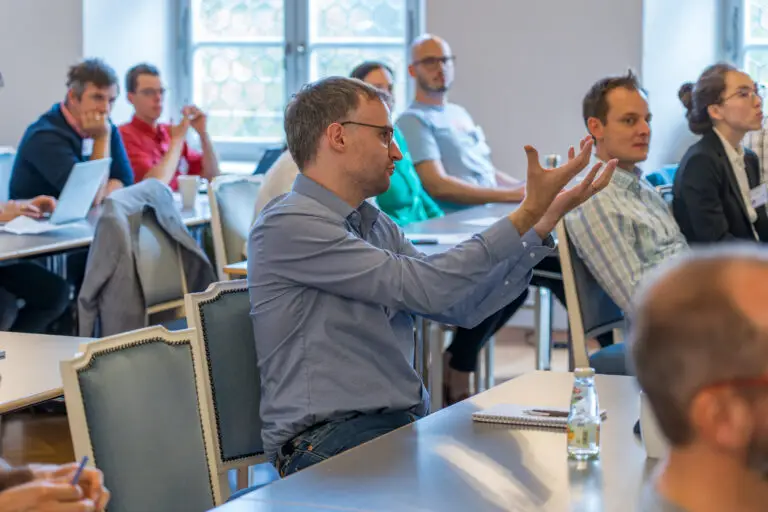
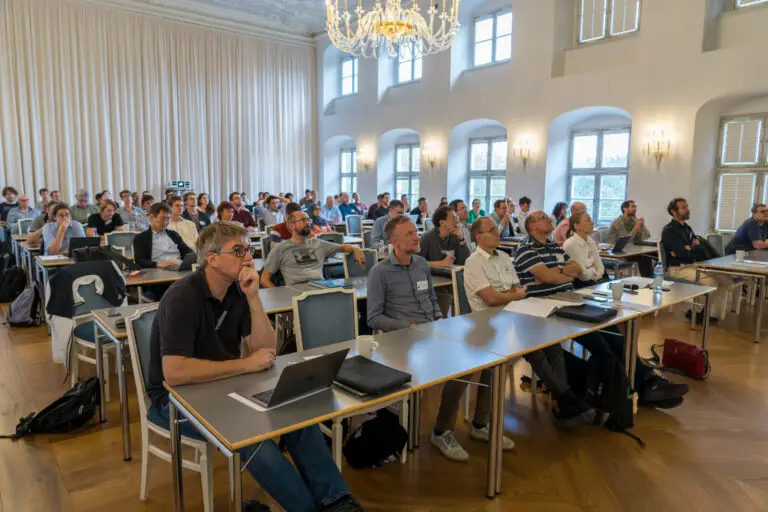
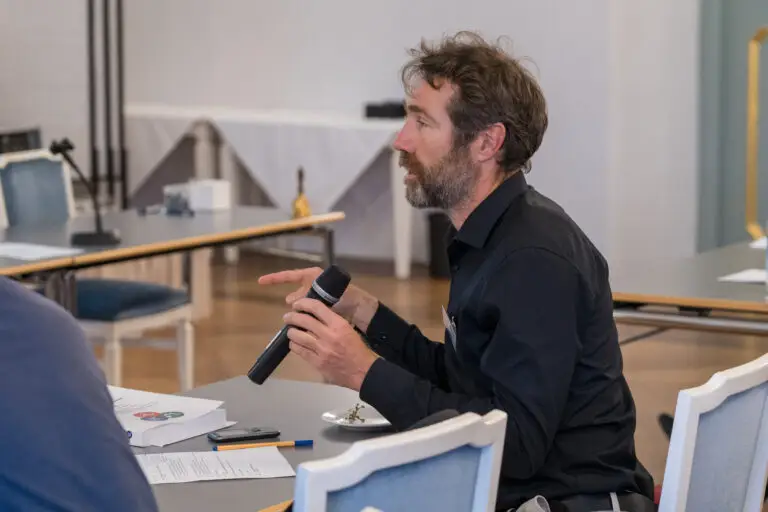
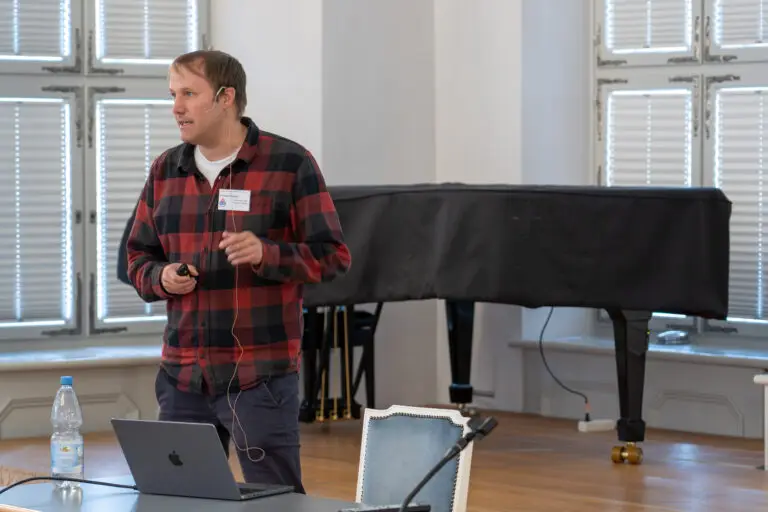
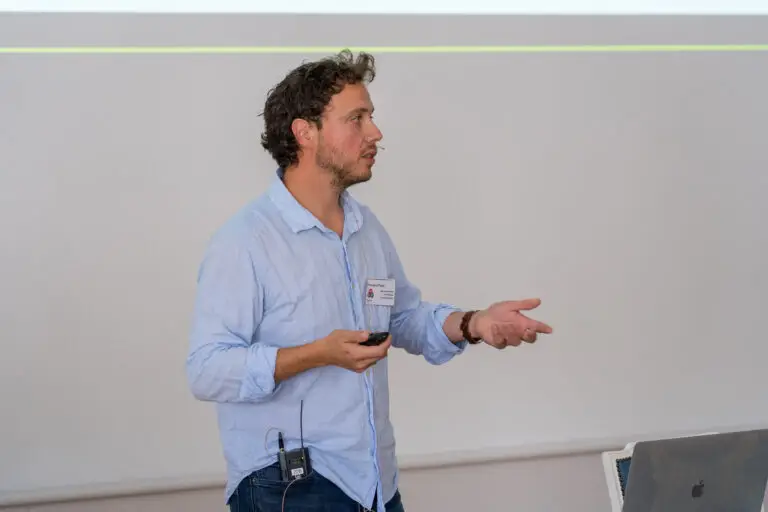

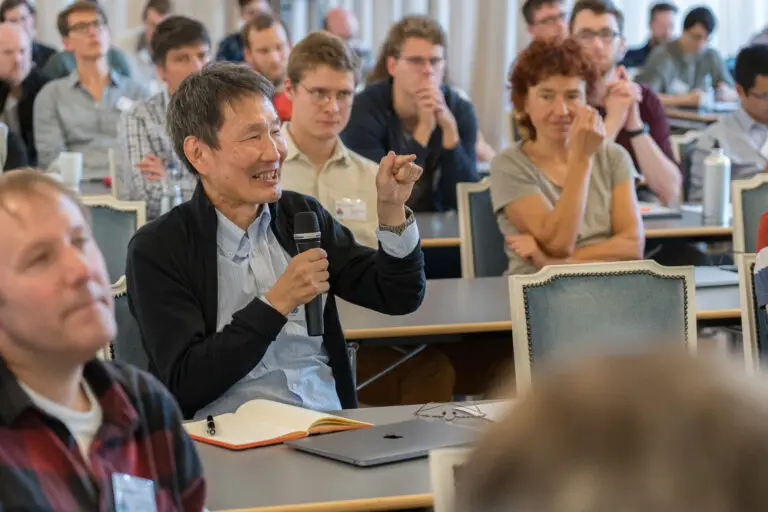
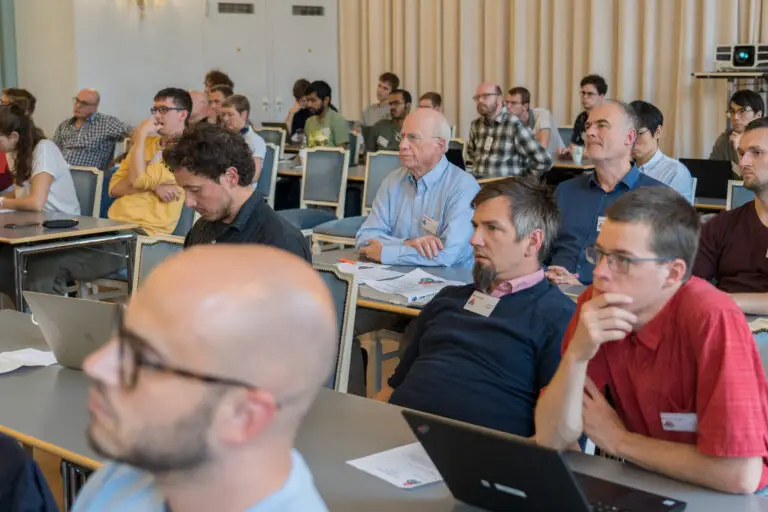
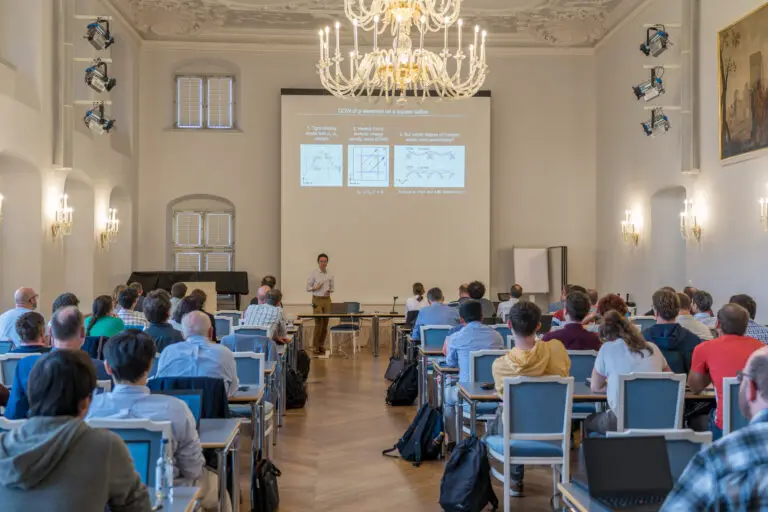
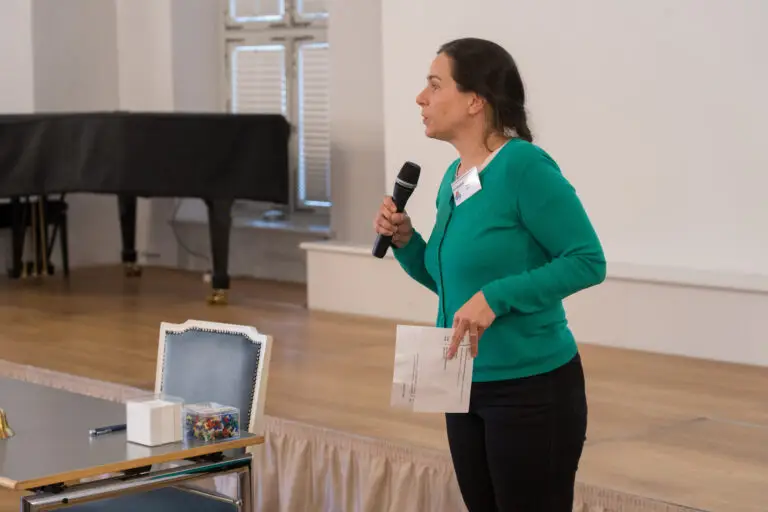
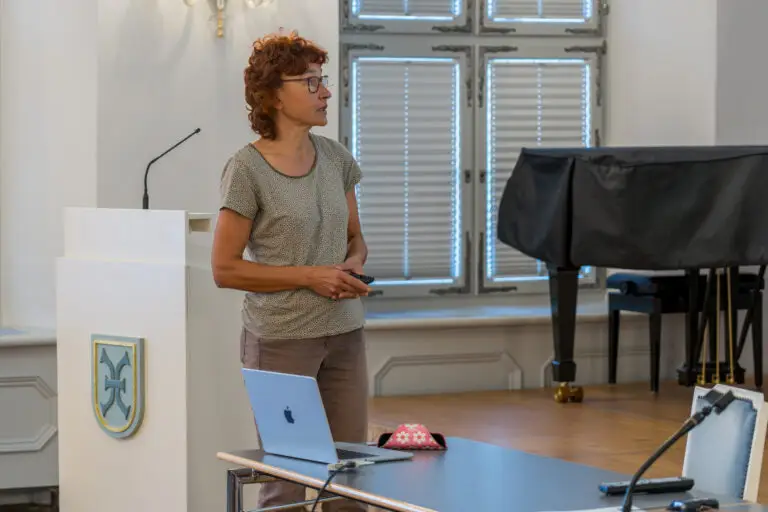
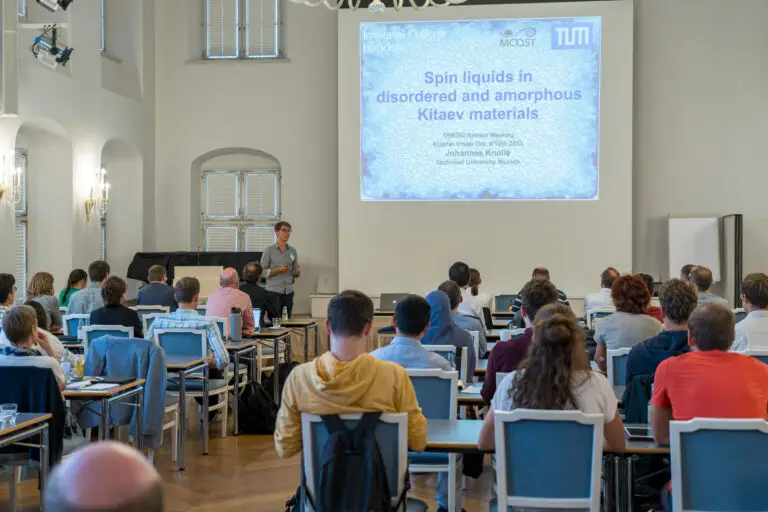
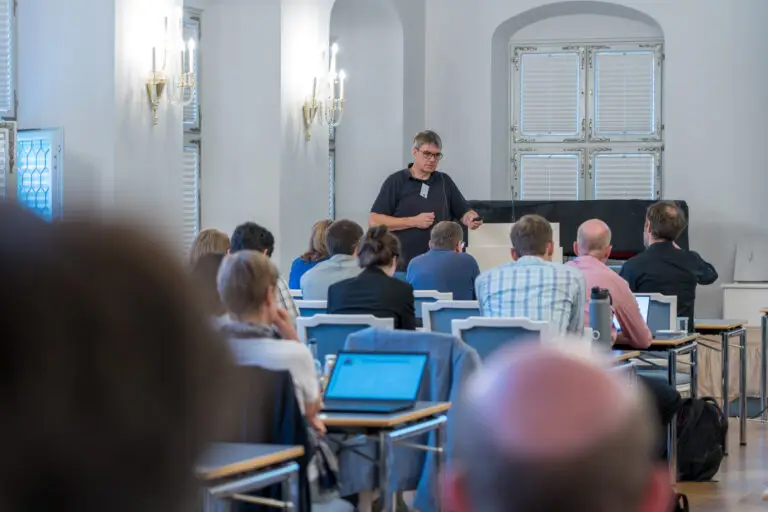
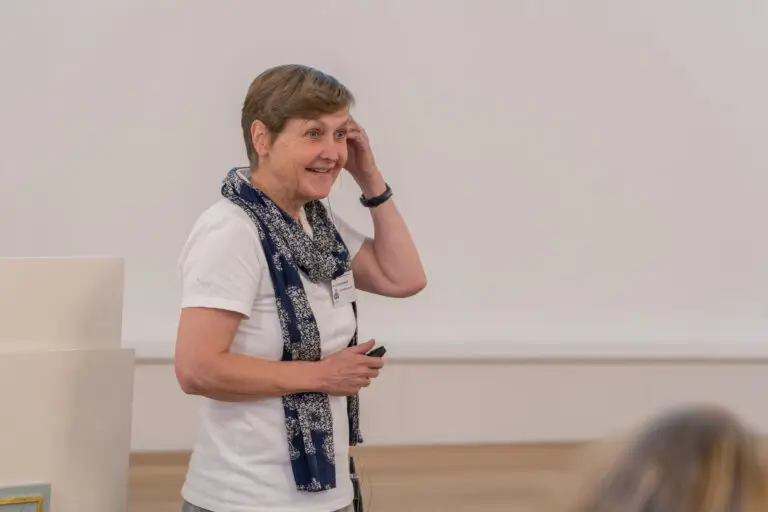
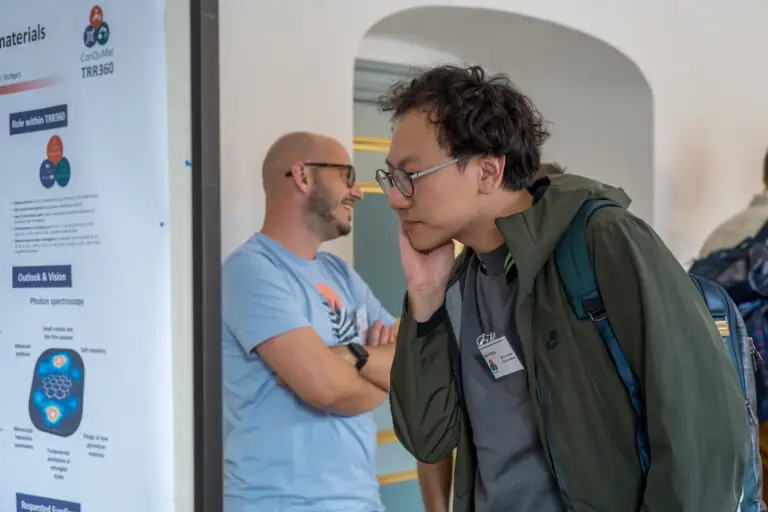
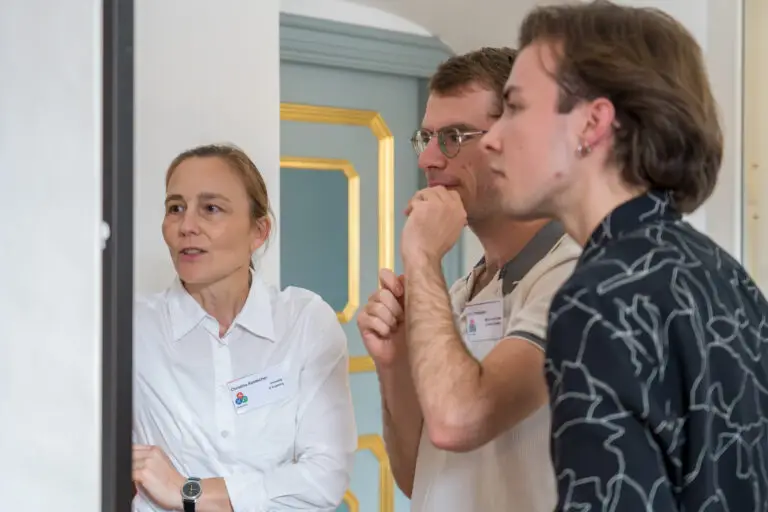
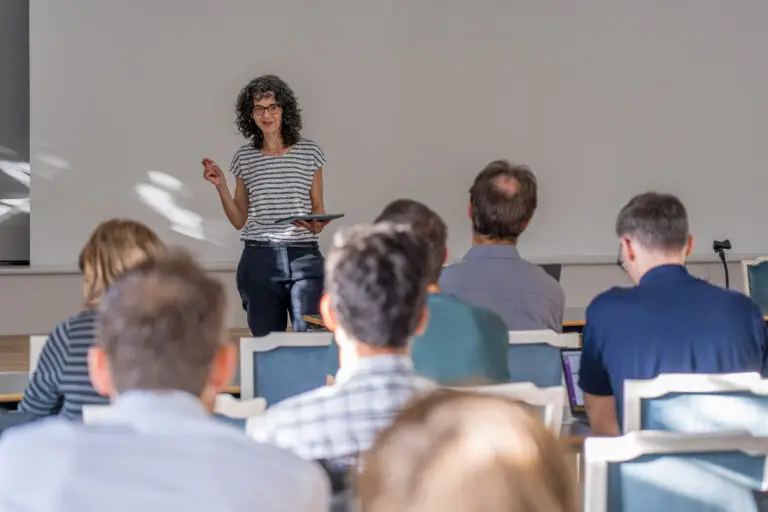
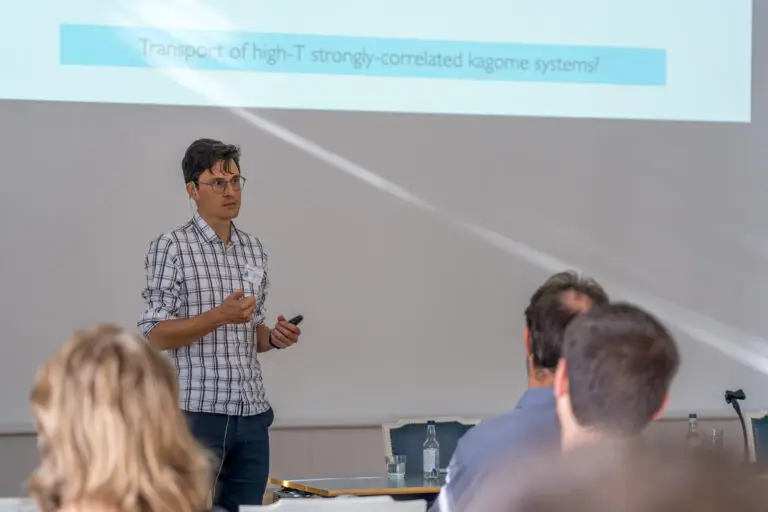
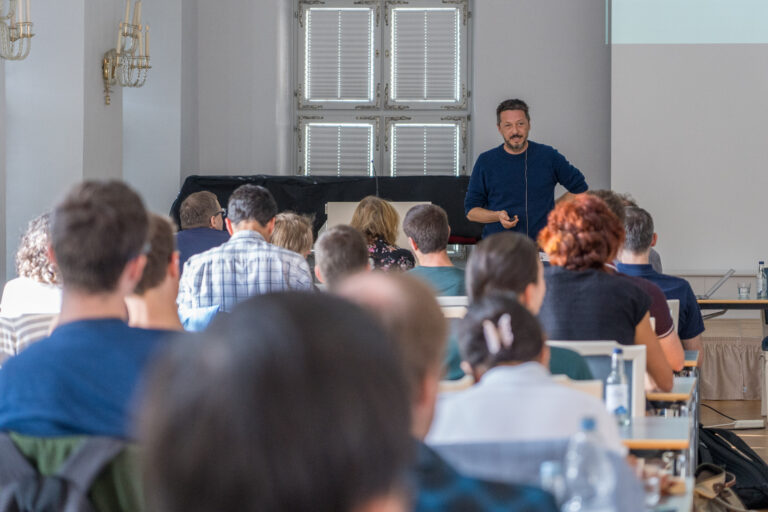
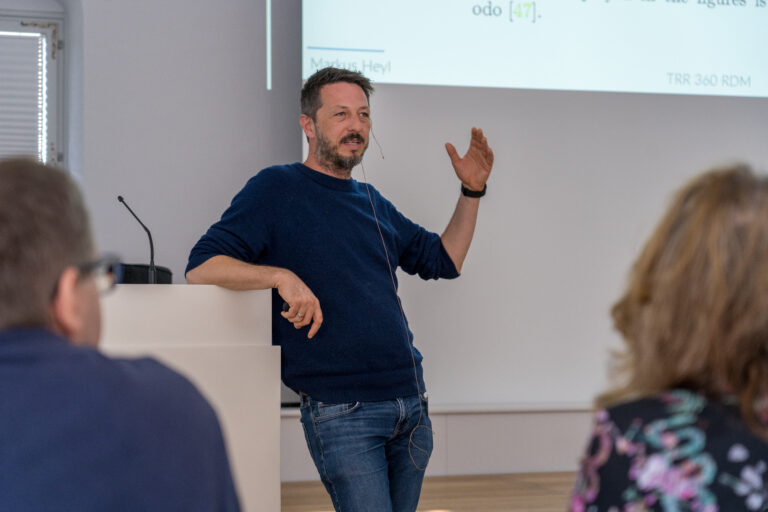

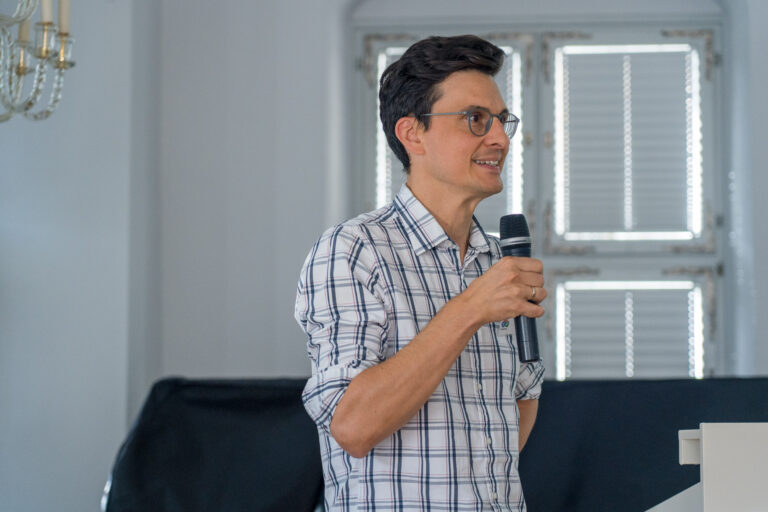
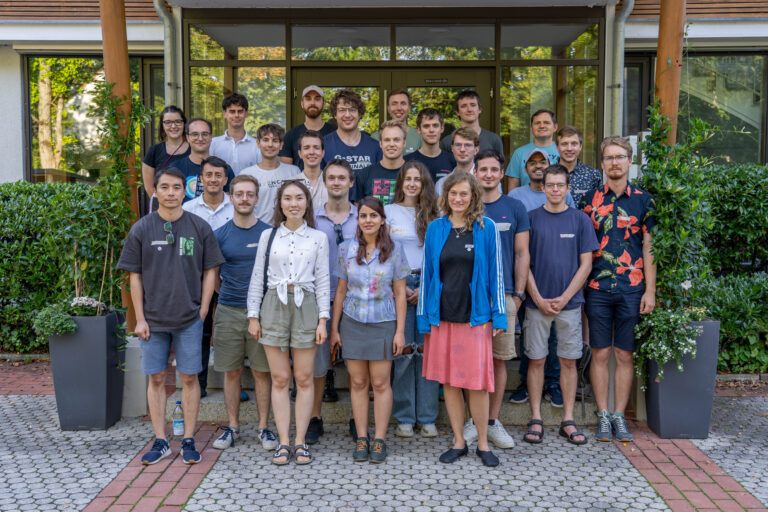
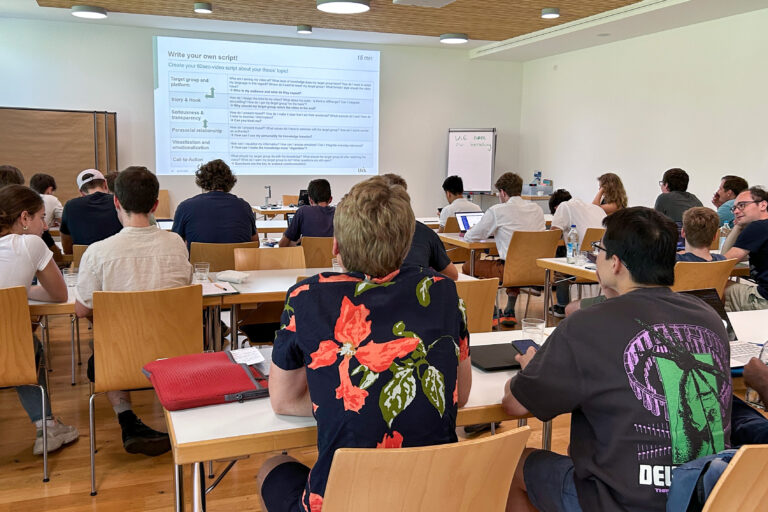
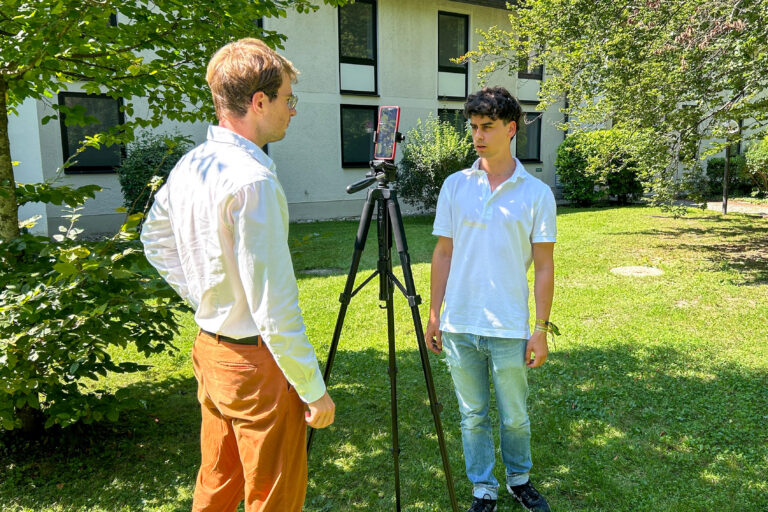

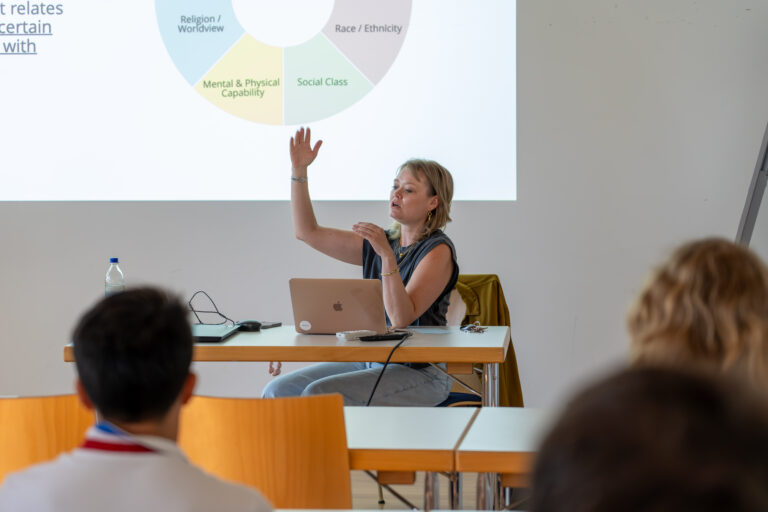
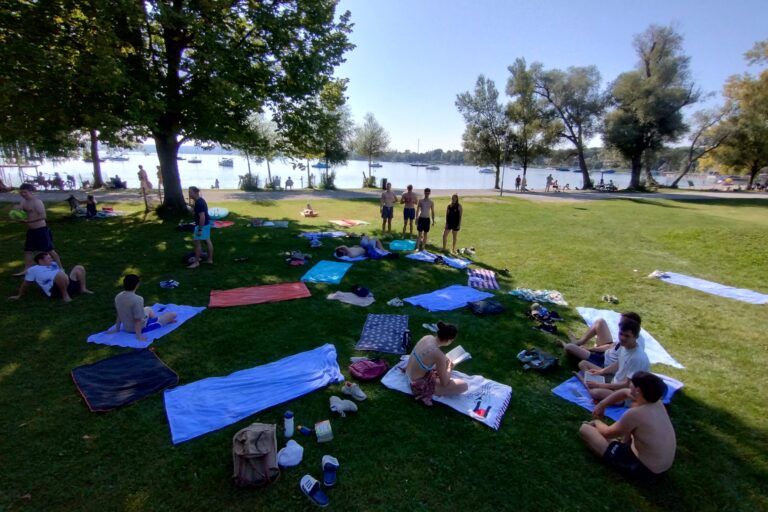
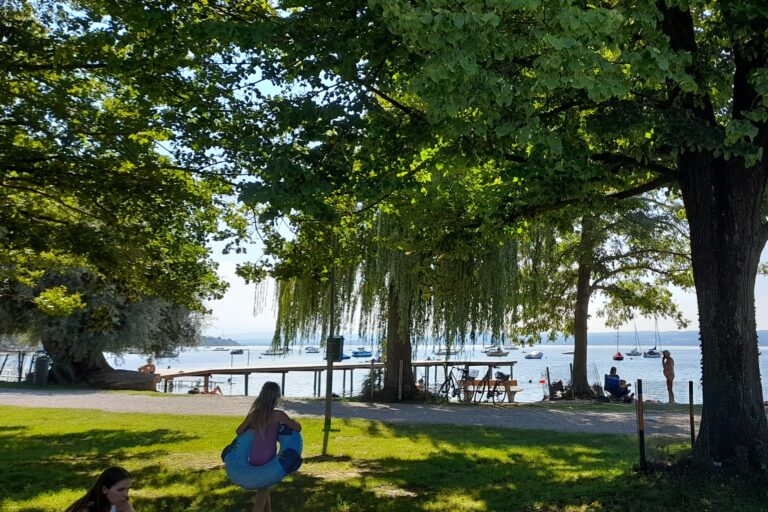
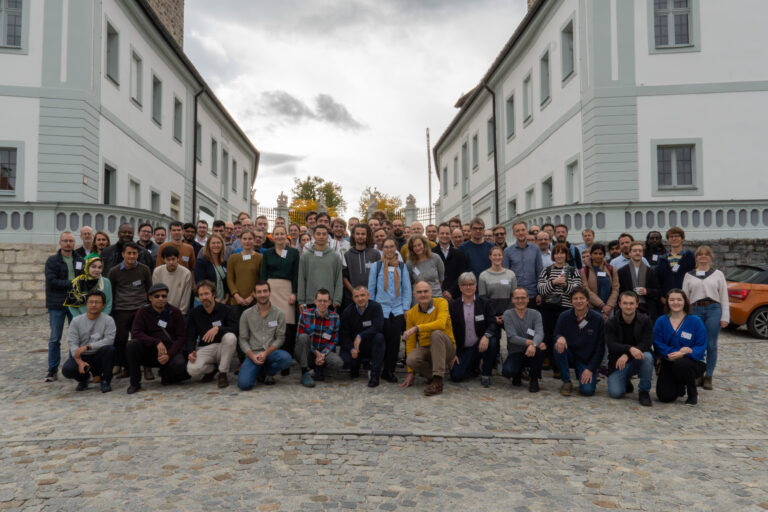

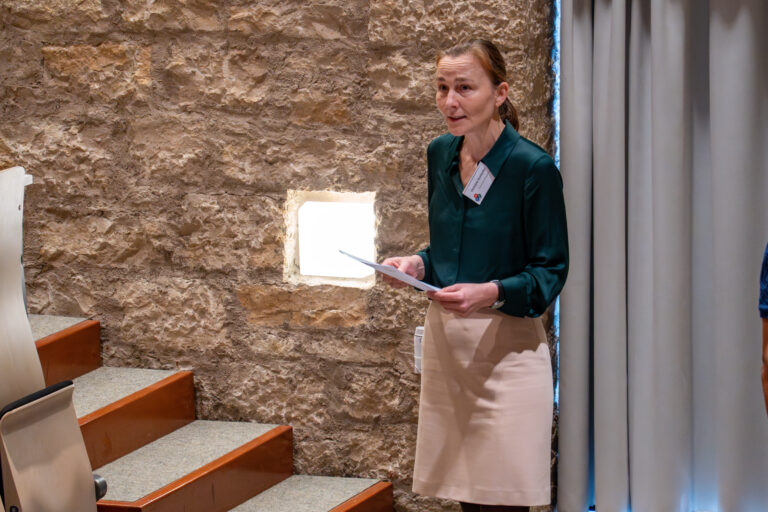


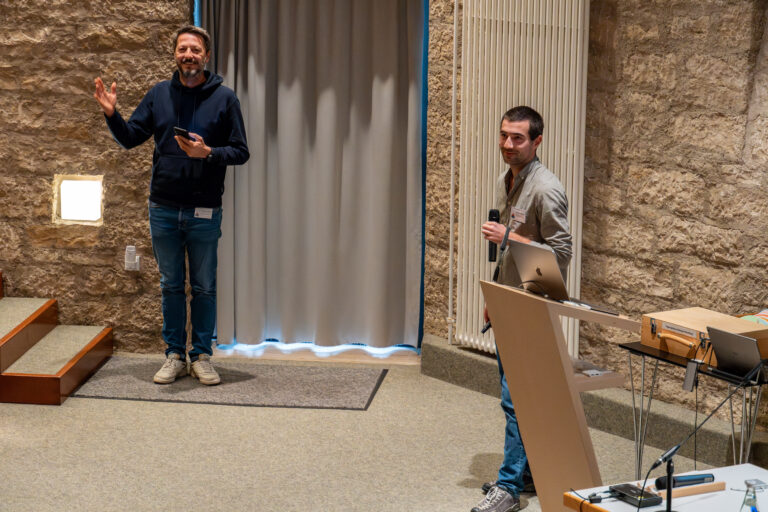
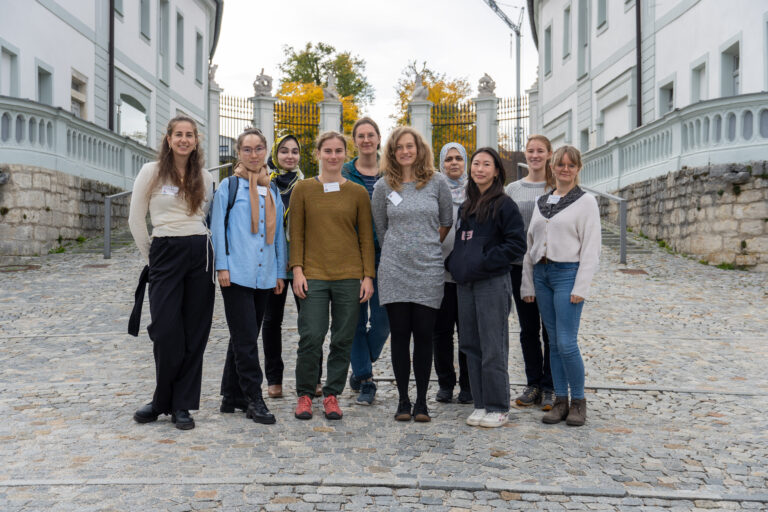
The research programme
We seek to design and utilize new quantum states by taking advantage of the recently developed capability to tailor electron systems in complex materials through a variety of complementary constraints, focusing on spin-momentum locking, gauge structures of interacting spin systems, and kinetic constraints.
News
Here you can find all the important news around the project ConQuMat: recent publication, internal events for project members and opening for various positions.
Outreach - Öffentlichkeitsarbeit
Dive with us into the fascinating world of quantum matter! (science communication offers in German)
Es gibt viele Angebote, um die Forschung aus dem Projekt ConQuMat der Öffentlichkeit zugänglich zu machen. Egal ob durch einen Blog, Spiele oder Erlebnisveranstaltungen – tauchen Sie mit uns in die faszinierende Welt der Quantenmaterie ein!
